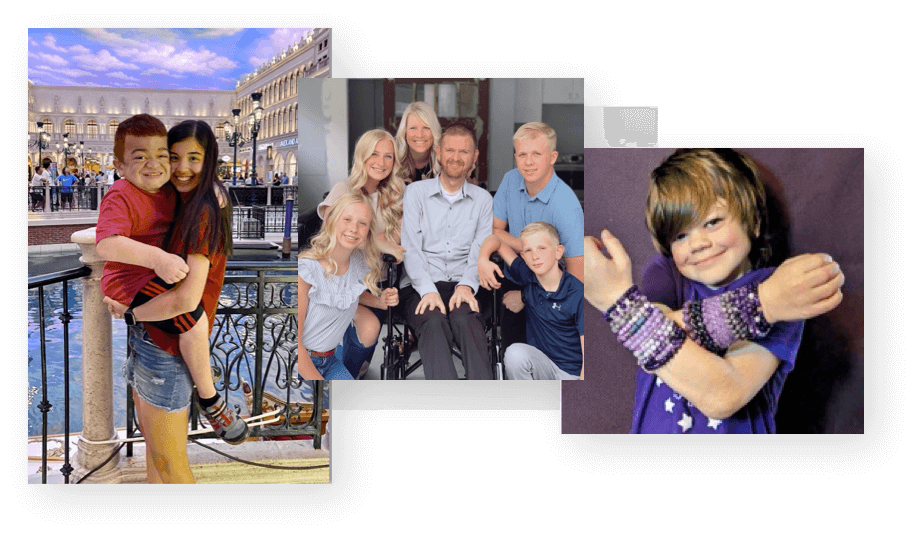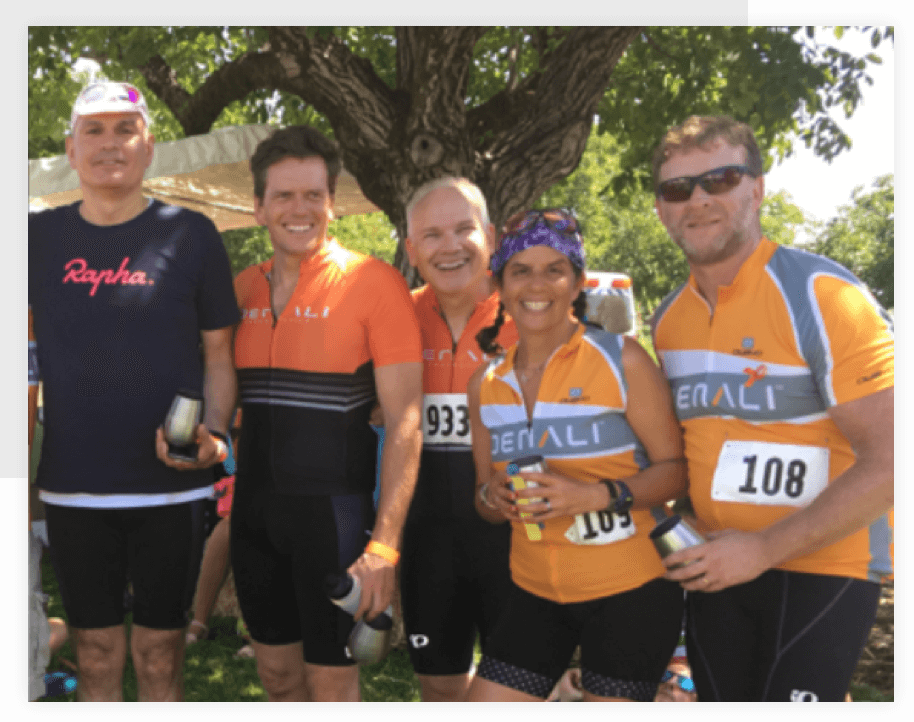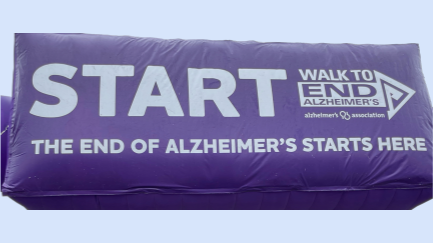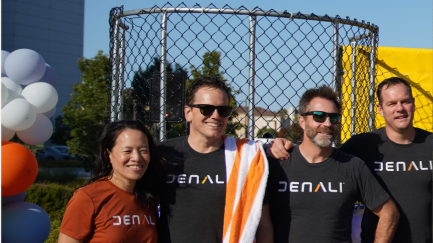Guiding our Path to Defeat Degeneration
Denali is committed to collaborating with the patient community as we aim to defeat degeneration.
Our focus is on the individuals and families we are working to support. By actively engaging the patient community and drawing insights from real-life experiences, we shape and guide our drug discovery and development process to bring new treatments forward.

We listen to those impacted by neurodegenerative and lysosomal storage diseases and seek out diverse perspectives.
We incorporate feedback from patient communities to drive scientific solutions that redefine the future for those impacted by these conditions.
We partner with patient advocacy organizations to help shape the future therapeutic landscape and enhance the well-being of the communities we serve.
We are committed to transparent communication about our clinical development programs and engagement efforts.
The Denali Patient Advocacy Team
“We are here to make a meaningful difference, driven by genuine care. We strive to listen with empathy, offering a voice to patient communities, both within our organization and beyond. We're dedicated to fostering collaborations and initiatives that actively support the communities we serve, all while working to build trust and confidence with the advocates and individuals we connect with. Every day, we approach our mission with passion and a desire to serve, firmly believing in the power of advocacy—change happens when we all come together for a common purpose.”
Kim Ramsey
Senior Director, Advocacy
Sydney Gardner
Senior Manager, Advocacy
Connect with us
Our patient advocacy team serves as the link between our team and the patient community. We’d love to hear from you. Contact [email protected] to learn more.

A strong base of community support
Denali collaborates closely with the patient community at all levels and stages of our work.
We enjoy participating in and attending community events. Our team hosts awareness-building activities with individuals and families to shed light on these devastating diseases.
“The most inspiring moments here at Denali are when we interact with patients, which we do in many ways. We see patients at our staff meetings, we participate in patient community events, in walks; those are the moments when we all really go back to our work fully fired up and fully inspired.”
Alex Schuth – Chief Operating and Financial Officer, Denali Therapeutics
Conditions Denali is studying
Denali is currently conducting several clinical studies with the goal of gaining a deeper understanding of how our potential treatments may address disease progression and symptoms in our quest to defeat degeneration.
Hear Michael Ostland, Ph.D., Denali’s Head of Development Europe, talk about the importance of bringing the patient and family perspective into treatment development.
“The families are the ones that we’re trying to ultimately reach with medicines that make a difference in their lives. Understanding their journey, understanding what treatment needs to be like to meet their needs; this is something we have to understand at a deep level. We need to build it into everything that we do, from our clinical trials to our access strategies, everything down the line. And the only way you get there is talking with people with that experience.”
Hear Michael Ostland, Ph.D., Denali's VP of Development Europe, talk about the importance of bringing the patient and family perspective into treatment development.
Click these links to learn more about the diseases Denali is working to treat.
Denali aims to deliver treatments to the brain to address neurodegeneration
The Blood-Brain Barrier (BBB) is a specialized and highly selective barrier that prevents harmful substances, pathogens (such as bacteria and viruses), and toxins from passing from the bloodstream into the brain.
While essential in its role to protect the brain, the BBB can pose challenges in delivering medications to the brain to treat neurodegenerative conditions.
Denali is pursuing new treatments engineered to cross the BBB to reach the cells in the brain. By delivering treatment to the brain, we aim to address the cognitive, behavioral and neurological symptoms of disease with the goal to improve the lives of those impacted by neurodegenerative and lysosomal storage diseases.
Listen to Chief Medical Officer Carole Ho, M.D. speak about Denali’s hopes for transformative medicines.
“I'm excited about the fact that we have technology now to get these medicines across the blood-brain barrier. And melded with our new understanding of the science, we’re really breaking into a new era where I’m very hopeful that we will have medicines that transform patients’ lives.”
Listen to Chief Medical Officer Carole Ho, M.D. speak about Denali’s hopes for transformative medicines.
Different approaches to deliver treatments across the blood-brain barrier (BBB)
Denali’s Transport Vehicle (TV) technology: large molecules
Denali’s Transport Vehicle (TV) technology is designed to deliver large molecule treatments, such as enzymes, proteins, and antibodies, to the brain and body by binding to the transferrin receptor (TfR) – which naturally moves iron and other nutrients across the BBB to the brain. Transferrin Receptors (TfRs) may also help delivery into tissues such as bone, cartilage, and the heart.
Watch the video to learn about the proposed mechanism of action for how our TV technology delivers enzyme treatment across the BBB.
“Denali’s transport vehicle (TV) is a technology that leverages a natural transport mechanism to cross the blood-brain barrier. One way we can use the TV is to enable brain delivery of the missing enzyme in lysosomal storage diseases.”
Nicolai Marroquin, Ph.D. - Associate Director, Medical Science Liaisons Europe at Denali Therapeutics
Denali’s orally administered investigational treatment programs: small molecules
We have engineered small molecule therapeutics to cross the blood-brain barrier. Small molecule therapeutics are taken by mouth and absorbed from the gut into the bloodstream. As with large molecules, the blood-brain barrier prevents most small molecules from entering the brain. This is due to “efflux pumps” at the blood-brain barrier that actively exclude small molecules.
We have rigorously designed our small molecule therapeutic candidates with chemical and physical properties that enable them to be readily absorbed from the gut, penetrate the blood-brain barrier, and avoid being pumped back into the bloodstream so they can remain in the brain, where they can exert potentially beneficial effects.
Check out our Scientific Approach Section to learn more about our discovery & development efforts to address neurogenerative diseases.
What are clinical studies, and why are they important?
Clinical studies are closely monitored research programs evaluating the effects of investigational or approved treatments in people. Primary objectives of clinical studies can include assessing the safety and/or effectiveness of an investigational treatment for the potential use by people to treat a disease.
All clinical studies undergo review and approval by a government health agency before participant enrollment can begin. In the United States, this is done by the Food and Drug Administration (FDA).
Clinical studies are divided into phases, which are described below in general terms. When a treatment for a rare disease is being evaluated in clinical studies, the phases may be combined or differ from below due to smaller patient populations, or for other reasons.
Listen to Denali's Chief Executive Officer Ryan Watts talk about the key partnerships that make medicine development possible.
”In order to actually invent and develop a medicine, it requires so many different groups of people. It’s not just the scientists that invented the medicine in the lab, it’s their partnership with the clinical group that then designs the trials. But most importantly, it’s a partnership with patient advocacy groups, with patients, and with families.”
Listen to Denali's Chief Executive Officer Ryan Watts talk about the key partnerships that make medicine development possible.
Phase 1
Participants
- A small number of people
What’s evaluated
- Safety of the study drug, including any risks
- Phase 1 may help determine the best dose of the study drug for future clinical studies and may include healthy volunteers

FOCUS ON
Safety (Risks)
Phase 2
Participants
- More people than in Phase 1
What’s evaluated
- The efficacy, or benefits of a potential treatment

FOCUS ON
Safety (Risks)
Efficacy (Benefits)
Phase 3
Participants
- Even more people than in Phases 1 and 2
What’s evaluated
- Confirming that a potential treatment provides real benefit and reasonable safety risk profile in a large group
- Next, a drug is typically submitted to a government health agency for review, such as the FDA

FOCUS ON
Safety (Risks)
Efficacy (Benefits)
Phase 4
After FDA approval
- The drug is made available to the public
- Additional studies test the treatment for long-term efficacy and safety risk profile

FOCUS ON
Safety (Risks)
Efficacy (Benefits)
You may also come across other terms related to clinical studies. Also, please note this information is for illustrative purposes only – study design can vary.

Placebo
A harmless, inactive substance designed to resemble the investigational treatment being evaluated in a clinical study. Placebos are often used as a control to help researchers researchers and health authorities such as the FDA determine the true effect and safety profile of an investigational treatment.

Randomized
How study participants are assigned into different groups of a clinical study, by chance. For example, study participants receiving the investigational treatment and those receiving placebo will be assigned in a completely random and unbiased manner. Randomization is a critical component of rigorous clinical research, as it helps to control for variables that can affect the validity of study results.

Double-blind
Neither the study participant, care partner, doctor, study site, nor Denali clinical team know if a study participant is receiving the investigational treatment or the placebo, which is intended to limit bias.

Open-label
A study in which all people know which medication they are receiving. Many open-label studies are used to evaluate long-term safety and efficacy.
Listen to Denali’s Chief Medical Officer Carole Ho, M.D. recognizing participants and families for their contributions to clinical trials.
“I think for all of the families that contribute to helping us understand the disease, enrolling in clinical trials, investing their time in talking to us – an immense amount of gratitude for sharing that when we know things are challenging for them at home and for taking care of their loved ones.”
Listen to Denali’s Chief Medical Officer Carole Ho, M.D. recognizing participants and families for their contributions to clinical trials.
For more resources to learn about the clinical trial process, please visit
By clicking these links, you will leave the Denali Therapeutics website and be redirected to a third-party site. Denali is not responsible for, nor does it endorse, the content, terms and conditions of use or privacy practices of external websites.




